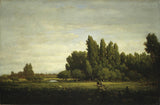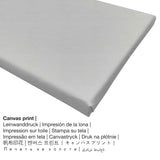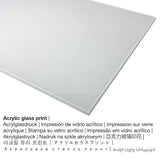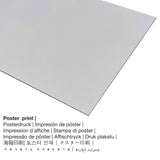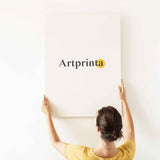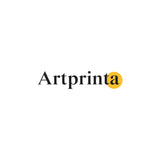Théodore Rousseau, 1845 - Ala ahịhịa nke osisi gbara - ọmarịcha nka.
Ụtụ gụnyere. Mbupu gbakọrọ na ndenye ọpụpụ.
Ihe ndị a na-ahọrọ
In the dropdown selection right next to the product you can select your prefered size and material. We allow you to pick your favorite size and material among the following product individualization options:
- Bipụta na iko acrylic (nke nwere ezigbo mkpuchi iko n'elu): The print on acrylic glass, which is sometimes referred to as a fine art print on plexiglass, will convert your favorite artwork into beautiful wall decoration. Besides, the acrylic art print makes a good alternative option to canvas and aluminidum dibond art prints. Your own copy of the work of art is custom-made with state-of-the-art UV direct printing machines. It creates deep, intense color tones. With an acrylic glass fine art print sharp contrasts and granular image details become visible because of the very fine gradation. Our real glass coating protects your chosen fine art print against light and external influences for many years.
- Mpempe akwụkwọ ederede (akwa akwa akwa): The poster print is a UV printed sheet of cotton canvas paper with a slightly rough finish on the surface. The poster print is optimally appropriate for putting the art copy in a custom frame. Please note, that depending on the size of the canvas poster print we add a white margin of something between 2-6cm round about the work of art, which facilitates the framing.
- Metal (aluminium debond mbipụta): These are metal prints on aluminium dibond material with an impressive effect of depth. For your Aluminium Dibond print, we print the chosen work of art right on the aluminium surface. The colors of the print are luminous and vivid, the fine details of the print appear clear and crisp.
- Mbipụta kwaaji: The UV printed canvas applied on a wood frame. What is more, canvas produces a cosy and pleasing effect. Canvas prints are relatively low in weight, meaning that it is easy to hang up your Canvas print without additional wall-mounts. A canvas print is suited for all kinds of walls in your home.
Legal note: We try whatever we can to depict our art products as accurately as possible and to display them visually in our shop. Nevertheless, the colors of the printed materials and the print result can differ slightly from the representation on the device's monitor. Depending on the screen settings and the quality of the surface, not all color pigments are printed one hundret percent realistically. Considering that the fine art prints are printed and processed manually, there may also be slight deviations in the exact position and the size of the motif.
What does the original description of the The Metropolitan Museum of Art say about this 19th century artwork painted by Théodore Rousseau? (© - by The Metropolitan Museum of Art - Museumlọ ihe ngosi nka nke Obodo)
Rousseau undertook frequent sketching expeditions in the French provinces. In 1844, along with fellow landscapist Jules Dupré (1811–1889), he visited the Landes region in the southwest, where he made works distinctive for their penetrating observation and careful execution. This canvas was probably painted shortly afterward, about 1845. As in many of his landscapes of the mid-1840s, Rousseau arranged the distant planes in parallel strips, a compositional device that he called "planimetric."
"A Meadow Bordered by Trees" was painted by Théodore Rousseau in 1845. The 170 year-old original version of the piece of art was made with the absolute size: 16 3/8 x 24 3/8 in (41,6 x 61,9 cm) and was manufactured on the medium mmanụ n'elu osisi. What is more, this artpiece can be viewed in in the collection of The Metropolitan Museum of Art in New York City, New York, Njikota Obodo Amerika. This public domain piece of art is included with courtesy of The Metropolitan Museum of Art, New York, Bequest of Robert Graham Dun, 1900. Creditline of the artwork: Bequest of Robert Graham Dun, 1900. Besides this, the alignment of the digital reproduction is odida obodo na nwere akụkụ ruru nke 3: 2, which means that the length is 50% longer than the width. Théodore Rousseau was a male painter from France, whose art style can be attributed mainly to Realism. The French painter lived for a total of 55 years - born in the year 1812 na Paris, France ma nwụọ n'afọ 1867 na Barbizon, France.
Nkọwa ahaziri nke mpempe nka
| Aha nke ihe nka: | "A Meadow Bordered by Trees" |
| nhazi ọkwa: | sere |
| Category: | nkà nke oge a |
| Nhazi oge: | 19th narị afọ |
| Afọ nka: | 1845 |
| Afọ nka: | gbara afọ 170 |
| Ọkara nke ihe osise izizi: | mmanụ n'elu osisi |
| Akụkụ izizi nka: | 16 3/8 x 24 3/8 na (41,6 x 61,9 cm) |
| Ụlọ ihe ngosi nka / ebe: | Museumlọ ihe ngosi nka nke Obodo |
| Ebe ngosi nka: | New York City, New York, Njikota Obodo Amerika |
| website: | Museumlọ ihe ngosi nka nke Obodo |
| Ụdị ikike nka: | ngalaba ọha |
| Site n'aka: | Ụlọ ihe ngosi nka nke Metropolitan, New York, Arịrịọ nke Robert Graham Dun, 1900 |
| kreditline ọrụ nka: | Arịrịọ nke Robert Graham Dun, 1900 |
Ozi ihe ahaziri ahazi
| Nkewa bipụta: | ezi nka mmeputakwa |
| Usoro mmeputakwa: | dijitalụ mmeputakwa |
| Production usoro: | UV kpọmkwem obibi |
| Nlụpụta: | arụpụtara na Germany |
| Ụdị ngwaahịa: | a na-achọ |
| Eji ngwaahịa a chọrọ: | ihe osise nka, ihe ndozi mgbidi |
| Nhazi onyonyo: | usoro odida obodo |
| Ụdị anya: | 3: 2 - ( Ogologo: obosara) |
| Pụtara nha akụkụ onyonyo: | ogologo bụ 50% ogologo karịa obosara |
| Nhọrọ akwa: | akwụkwọ mmado (akwụkwọ kwaaji), mbipụta ọla (aluminium dibond), mbipụta kanvas, mbipụta iko acrylic (nwere ezigbo mkpuchi iko) |
| Mbipụta kanvas (akwa akwa na etiti ihe ndọtị): | 30x20cm - 12x8", 60x40cm - 24x16", 90x60cm - 35x24" |
| Mbipụta iko acrylic (nwere ezigbo mkpuchi iko) nhọrọ nha: | 30x20cm - 12x8", 60x40cm - 24x16", 90x60cm - 35x24" |
| Mpempe akwụkwọ mmado (akwụkwọ kwaaji) nha dị iche iche: | 60x40cm - 24x16", 90x60cm - 35x24" |
| Nhọrọ ebipụta aluminom: | 30x20cm - 12x8", 60x40cm - 24x16", 90x60cm - 35x24" |
| Nhazi mbipụta nka: | enweghị etiti |
Tebụl nchịkọta ihe nkiri
| aha: | Théodore Rousseau |
| Gender: | nwoke |
| Obodo onye nka: | French |
| Ọrụ: | onye na-ese ihe |
| Obodo onye nka: | France |
| nhazi ọkwa: | omenkà nke oge a |
| styles: | Ihe ngosi |
| Nwụrụ na afọ nke: | 55 afọ |
| Amụrụ n'afọ: | 1812 |
| Amụrụ na (ebe): | Paris, France |
| Afọ nwụrụ: | 1867 |
| Nwụrụ na (ebe): | Barbizon, France |
© nwebiisinka, Artprinta.com

